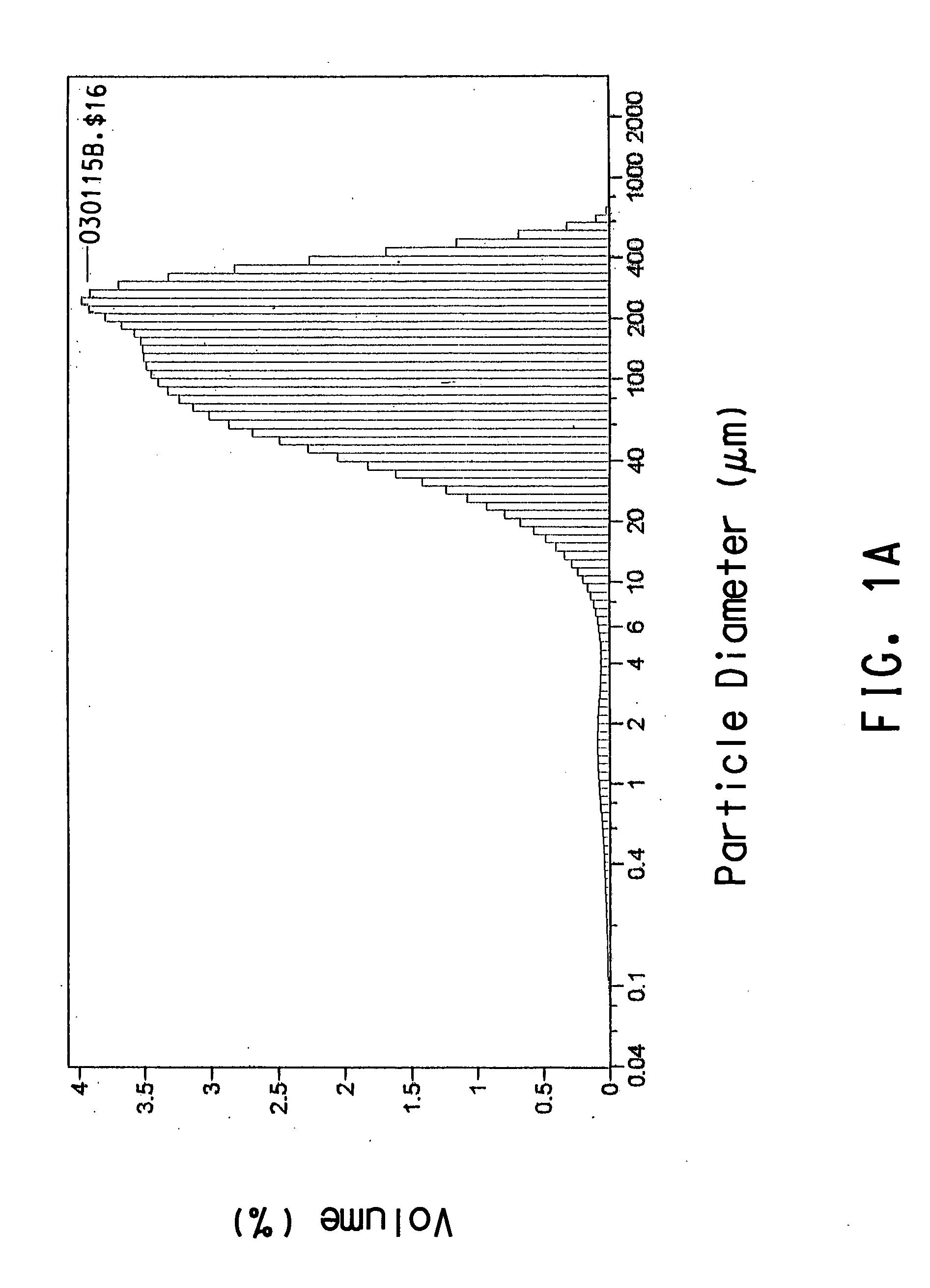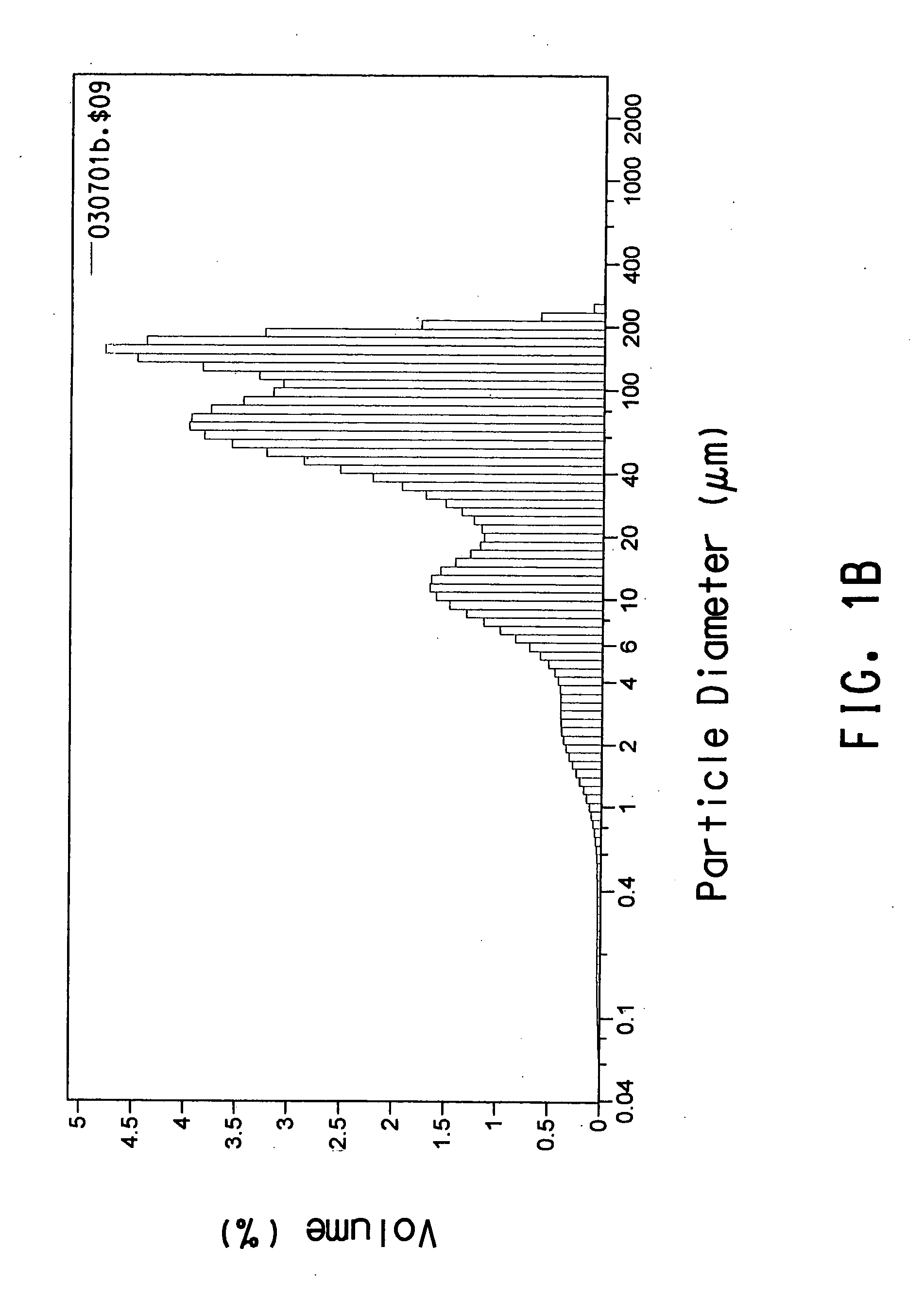Method to accelerate biodegradation of aliphatic-aromatic co-polyesters by enzymatic treatment
a technology of aliphatic polyester and aliphatic acid, which is applied in the field of polymer chemistry, can solve the problems of aliphatic polyester, lack of desired material properties, especially durability, and aliphatic polyester throwaway goods that are environmentally attractive but lack acceptable durability
- Summary
- Abstract
- Description
- Claims
- Application Information
AI Technical Summary
Benefits of technology
Problems solved by technology
Method used
Image
Examples
example 1
Enzyme Assay to Determine Effect of Lipase on Various Substrates
[0104] This example describes how treatment with a lipase releases terephthalic acid from aliphatic-aromatic co-polyesters. The polymer substrates were milled in a Bantam Micropulverizer (Mikropul, Summit, N.J.) using a final screen size of 0.006 inches. Samples of polymer substrate were incubated with lipase (Novozyme™ 871) in glass 125 mL screw cap Erlenmeyer flasks. Polymer substrates were suspended in 10 mM potassium phosphate buffer, pH 7.0, at a final concentration of 0.4 percent (w / v). Enzyme was added to the flasks from a stock solution (0.5 units / mL) to a final concentration of 10 units / mL. Control flasks of buffer alone, enzyme alone, and substrate alone were also prepared. The flasks were closed tightly and incubated at 55° C. in a shaking water bath. After an initial sample (T0), samples were withdrawn at 24 h (T24) and 48 h (T48). The samples were passed through a 0.45 micron Acrodisc® syringe filter (Pall...
example 2
Improved Degradation of Lipase Treated Polymer B
[0106] This example describes how initially treating Polymer B with commercially-available lipases allowed the polymer to be more rapidly degraded by a consortium of microorganisms derived from compost.
[0107] The initial treatment of Polymer B with lipase and subsequent treatment of Polymer B with a consortium of microorganisms was performed in Bioreactor #1. Bioreactor #1 was a standard 500-L jacketed glass vessel with a screw cap (Bellco Glass Inc., Stock # 1965-50500 W / J). The bioreactor had a magnetic stirrer to provide continuous agitation and was fitted to a controller to maintain pH 8.0. A circulating water bath was used to pass water through the bioreactor jacket to maintain a constant temperature inside the bioreactor (initially 55° C., 58° C. after 42 days of operation). Air was bubbled through the bioreactor culture medium at a flow rate of 50 mL / min. The bioreactor initially contained 350 mL of SMV1 culture medium (0.05 M...
PUM
| Property | Measurement | Unit |
|---|---|---|
| mole percent | aaaaa | aaaaa |
| mole percent | aaaaa | aaaaa |
| temperatures | aaaaa | aaaaa |
Abstract
Description
Claims
Application Information
 Login to View More
Login to View More - R&D
- Intellectual Property
- Life Sciences
- Materials
- Tech Scout
- Unparalleled Data Quality
- Higher Quality Content
- 60% Fewer Hallucinations
Browse by: Latest US Patents, China's latest patents, Technical Efficacy Thesaurus, Application Domain, Technology Topic, Popular Technical Reports.
© 2025 PatSnap. All rights reserved.Legal|Privacy policy|Modern Slavery Act Transparency Statement|Sitemap|About US| Contact US: help@patsnap.com



